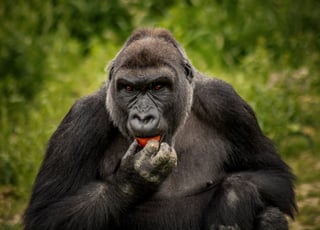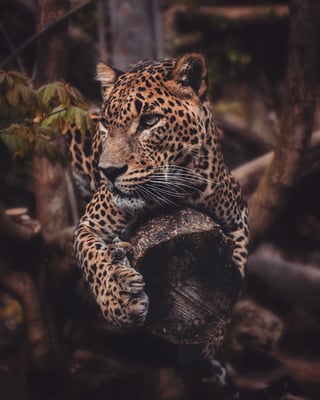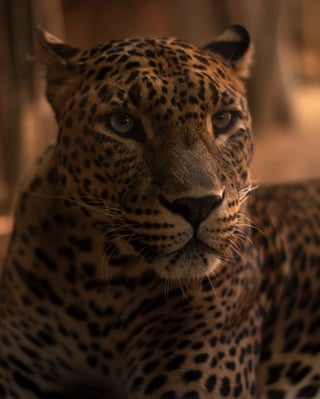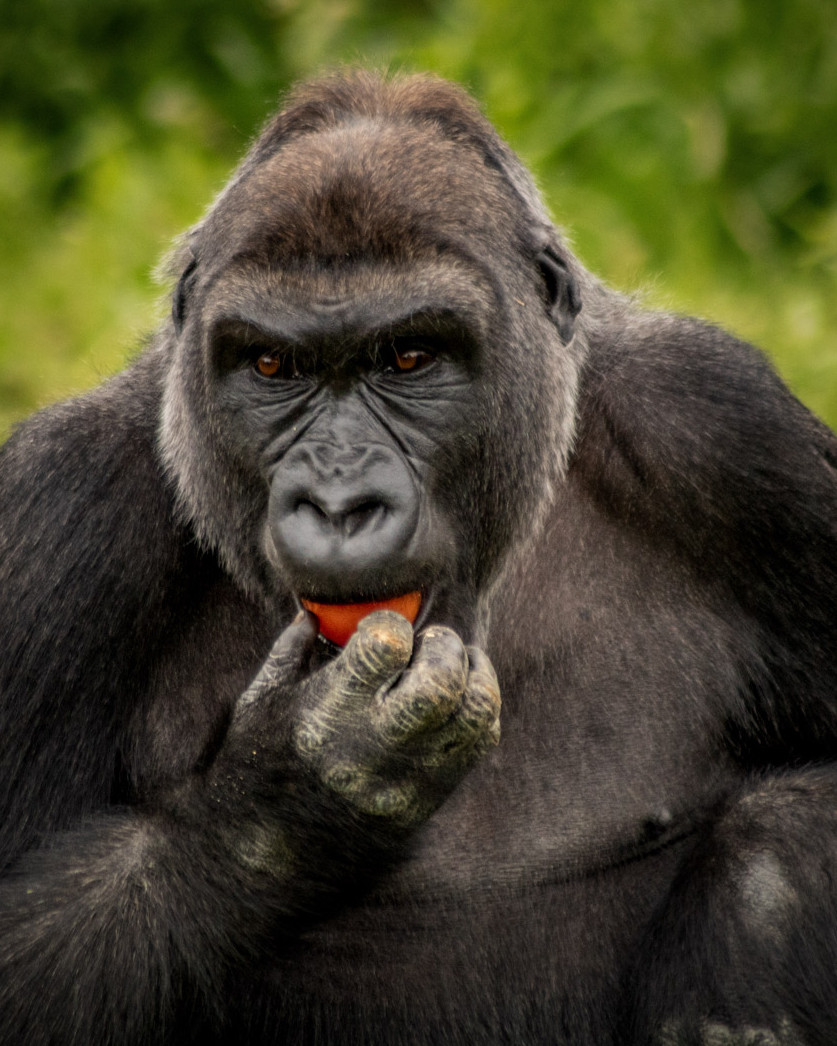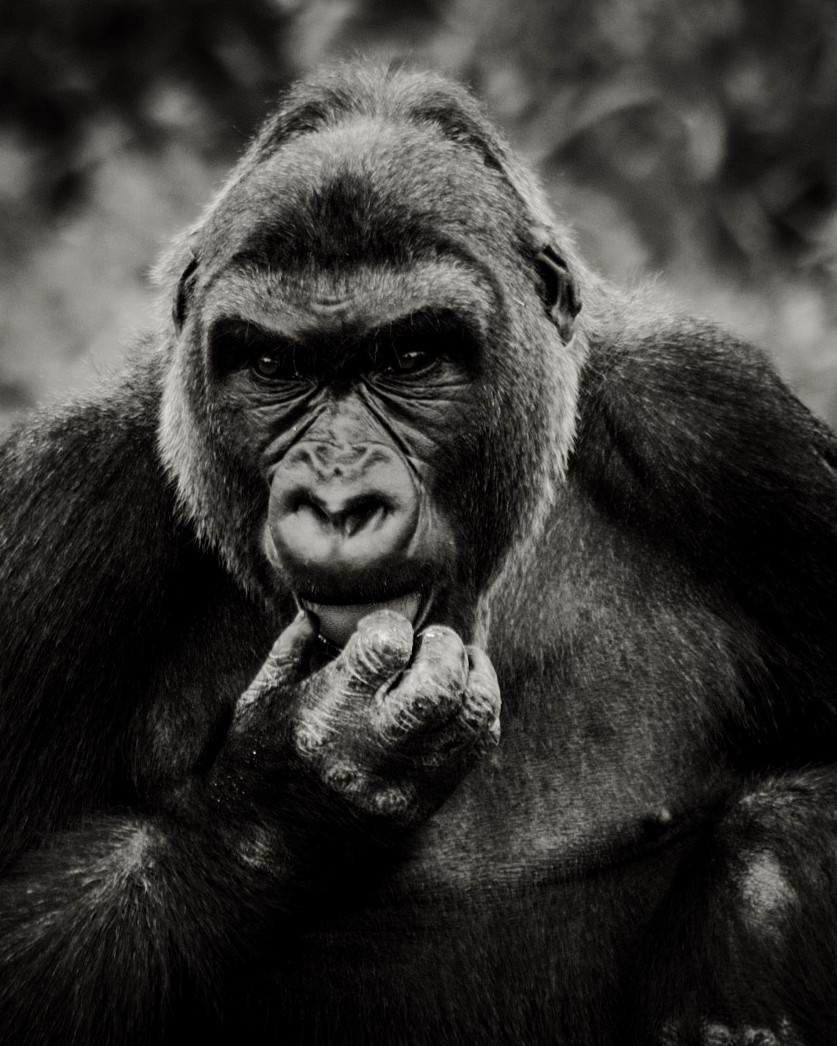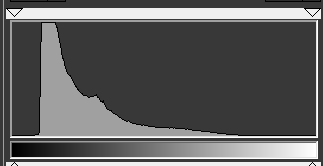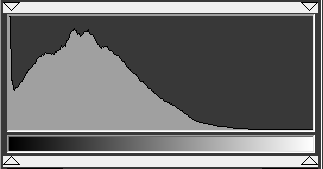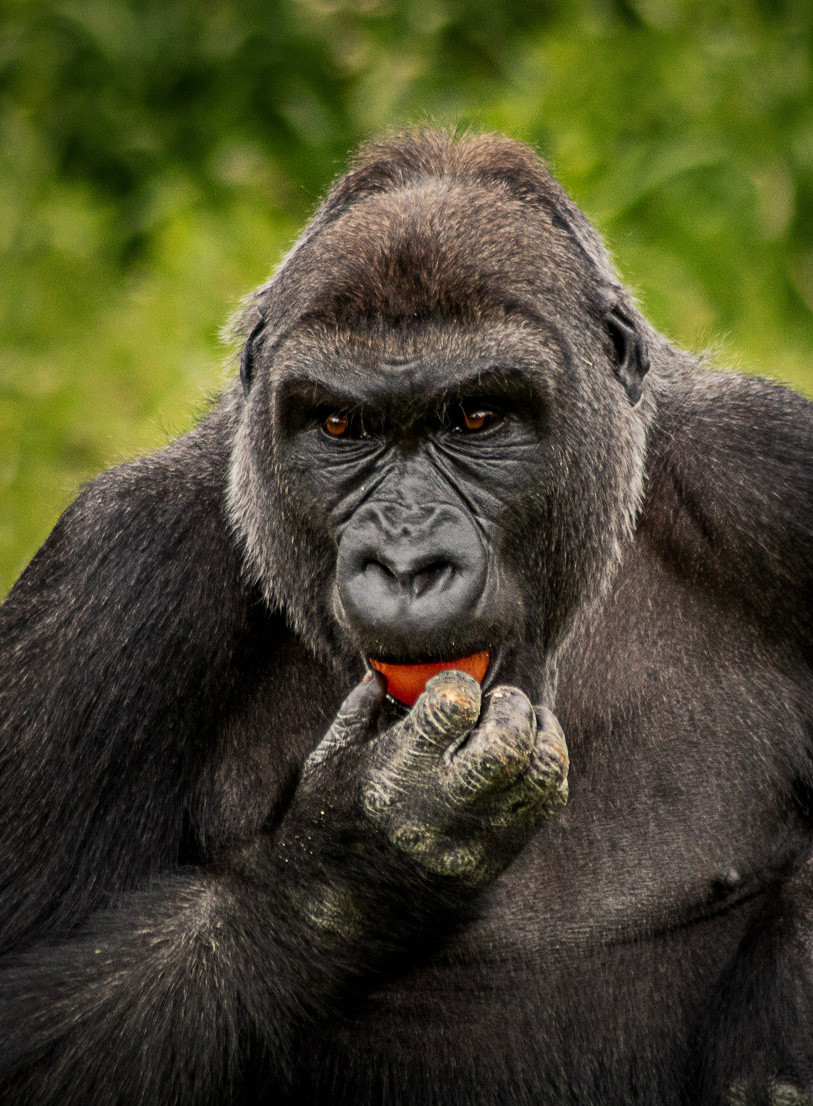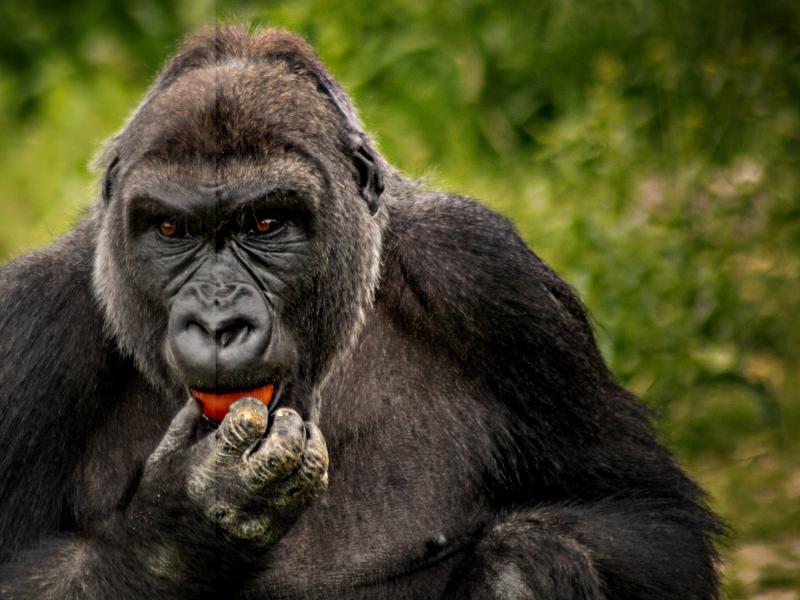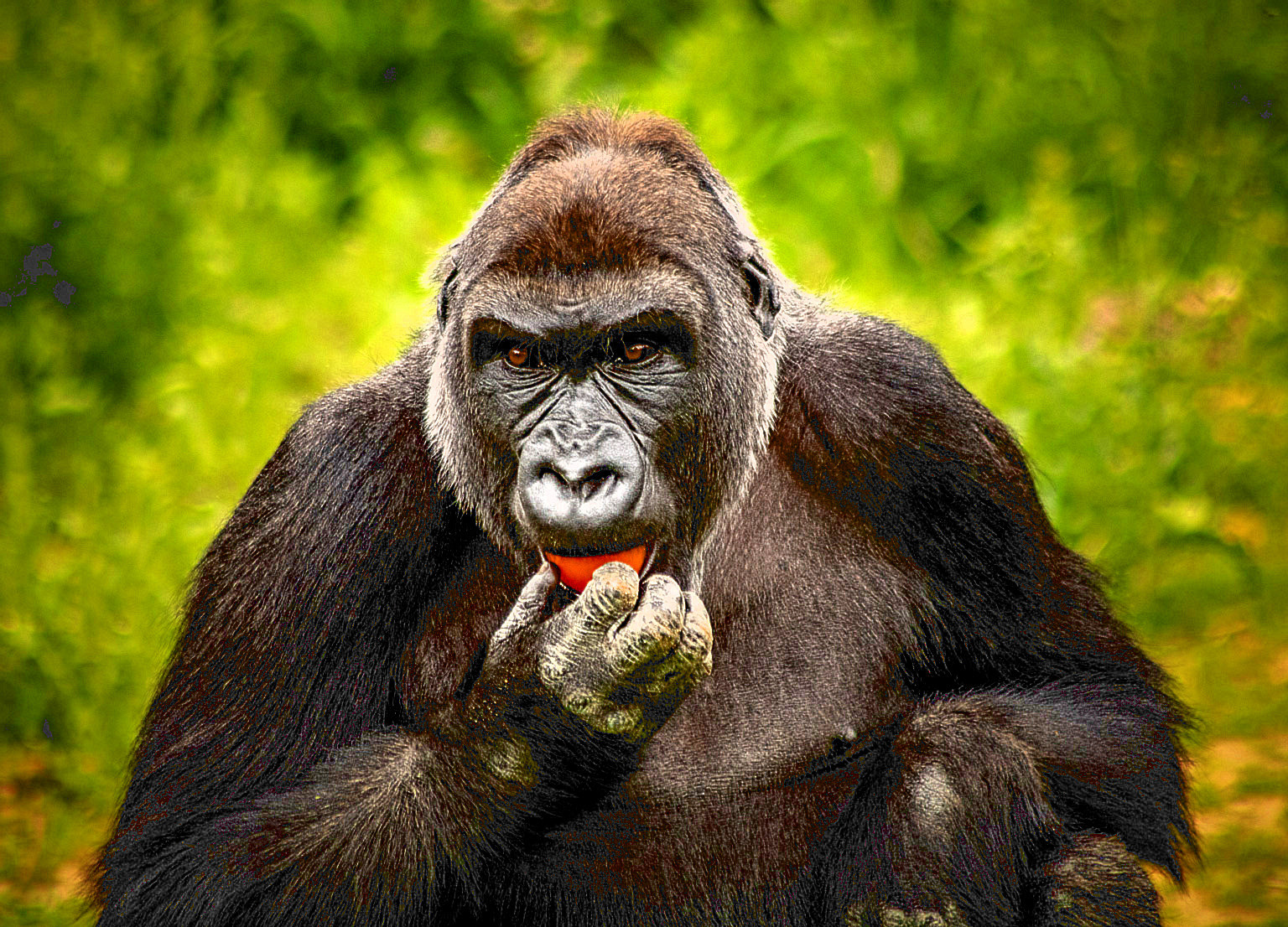The first photo (Gorilla) is one I took, whereas the second photo was taken by a more serious (not sure if professional) photographer.
The second photo is clearly better but I'm not sure what the biggest factor is, or which of the following three options would have the most effect in making my photos look as good as his.
In this instance I'm not concerned about the skill of the photographer as I only do it as a hobby.
Body
I used a Canon 750D, whereas a Nikon D5600 was used for the Leopard.
Both crop-sensors so I'm assuming there's not a HUGE amount of difference here?
Lens
I used a Tamron 70-300mm f/4.0-5.6 Di LD (Cheap lens ~£100 new). Unfortunately, I'm not sure what lens he used.
Post-Processing
Other than cropping, the only post-processing I did was with the Camera Raw Filter. I can't remember exactly what I did but it would've been along the line of:
Vignette
Reduced exposure
Increased contrast
Reduced highlights
Increased clarity
Increased dehaze
Increased saturation
Radial filter to darken area around subject
Additional info requested in comments
Photo taken at 300mm, f/5.6, ISO-800, 1/640 sec, Handheld
I use manual focus on the Tamron lens because the AF is a bit slow and clunky.
My only goal with the photos really is to make them look as if they could've been taken in the wild (not at the zoo). However, I do also like the 'dramatic' look if possible.
EDIT Thanks for all your suggestions. I went and took a picture of a leopard myself (Used the Canon nifty fifty) :)

